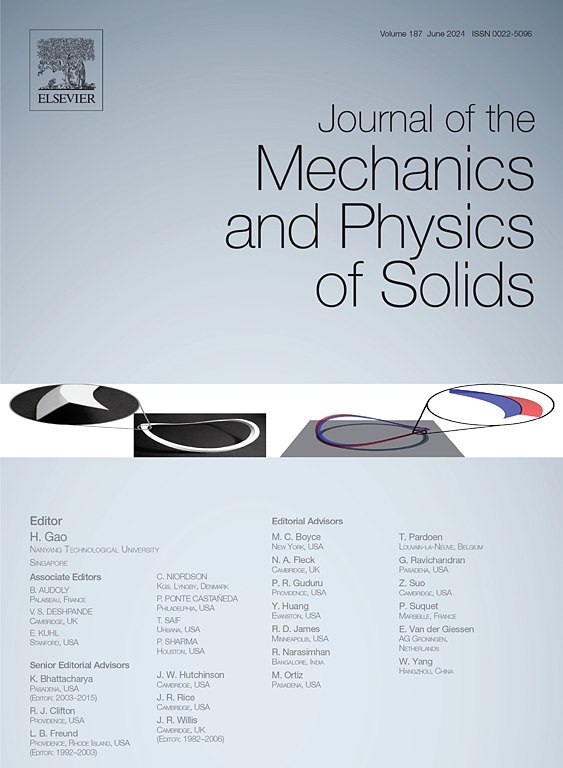Phase field fracture in elastoplastic solids: a stress-state, strain-rate, and orientation dependent model in explicit dynamics and its applications to additively manufactured metals
IF 5
2区 工程技术
Q2 MATERIALS SCIENCE, MULTIDISCIPLINARY
引用次数: 0
Abstract
Phase field models have gained increasing popularity in analysing fracture behaviour of materials. However, few studies have been explored to simulate dynamic ductile fracture to date. This study aims to develop a phase field framework that considers strain rate, stress state, and orientation dependent ductile fracture under dynamic loading. Firstly, the governing equations of displacement and phase fields are formulated within an explicit finite element framework. Secondly, constitutive relations are established using a hypoelastic-plasticity framework, encompassing the influence of material orientation and strain rate on both plasticity and fracture initiation. Stress state dependent fracture initiation is also considered. Thirdly, the finite element implementation and corotational formulation of constitutive equations are derived. Finally, to validate the proposed model, additively manufactured samples, including material-level and crack propagation specimens, are tested under dynamic loading conditions. Overall, the proposed phase field model can properly reproduce the experimental force-displacement curves and crack paths. Uniaxial tension tests reveal that a higher strain rate can lead to a higher hardening curve and reduced ductility. Other material specimens further demonstrate the model's capability to predict stress state and orientation dependent dynamic fracture. To simulate dynamic crack paths accurately, it is necessary to consider anisotropic fracture initiation. Lastly, the phase field model was applied for the first time to predict the dynamic response of triply periodic minimal surface (TPMS) structures. Dynamic crack patterns were effectively captured, and the fracture mechanisms were thoroughly analysed. This study provides an explicit phase field framework for dynamic ductile fracture, with applications to additively manufactured materials and structures.
求助全文
约1分钟内获得全文
求助全文
来源期刊
CiteScore
9.80
自引率
9.40%
发文量
276
审稿时长
52 days
期刊介绍:
The aim of Journal of The Mechanics and Physics of Solids is to publish research of the highest quality and of lasting significance on the mechanics of solids. The scope is broad, from fundamental concepts in mechanics to the analysis of novel phenomena and applications. Solids are interpreted broadly to include both hard and soft materials as well as natural and synthetic structures. The approach can be theoretical, experimental or computational.This research activity sits within engineering science and the allied areas of applied mathematics, materials science, bio-mechanics, applied physics, and geophysics.
The Journal was founded in 1952 by Rodney Hill, who was its Editor-in-Chief until 1968. The topics of interest to the Journal evolve with developments in the subject but its basic ethos remains the same: to publish research of the highest quality relating to the mechanics of solids. Thus, emphasis is placed on the development of fundamental concepts of mechanics and novel applications of these concepts based on theoretical, experimental or computational approaches, drawing upon the various branches of engineering science and the allied areas within applied mathematics, materials science, structural engineering, applied physics, and geophysics.
The main purpose of the Journal is to foster scientific understanding of the processes of deformation and mechanical failure of all solid materials, both technological and natural, and the connections between these processes and their underlying physical mechanisms. In this sense, the content of the Journal should reflect the current state of the discipline in analysis, experimental observation, and numerical simulation. In the interest of achieving this goal, authors are encouraged to consider the significance of their contributions for the field of mechanics and the implications of their results, in addition to describing the details of their work.

 求助内容:
求助内容: 应助结果提醒方式:
应助结果提醒方式:


